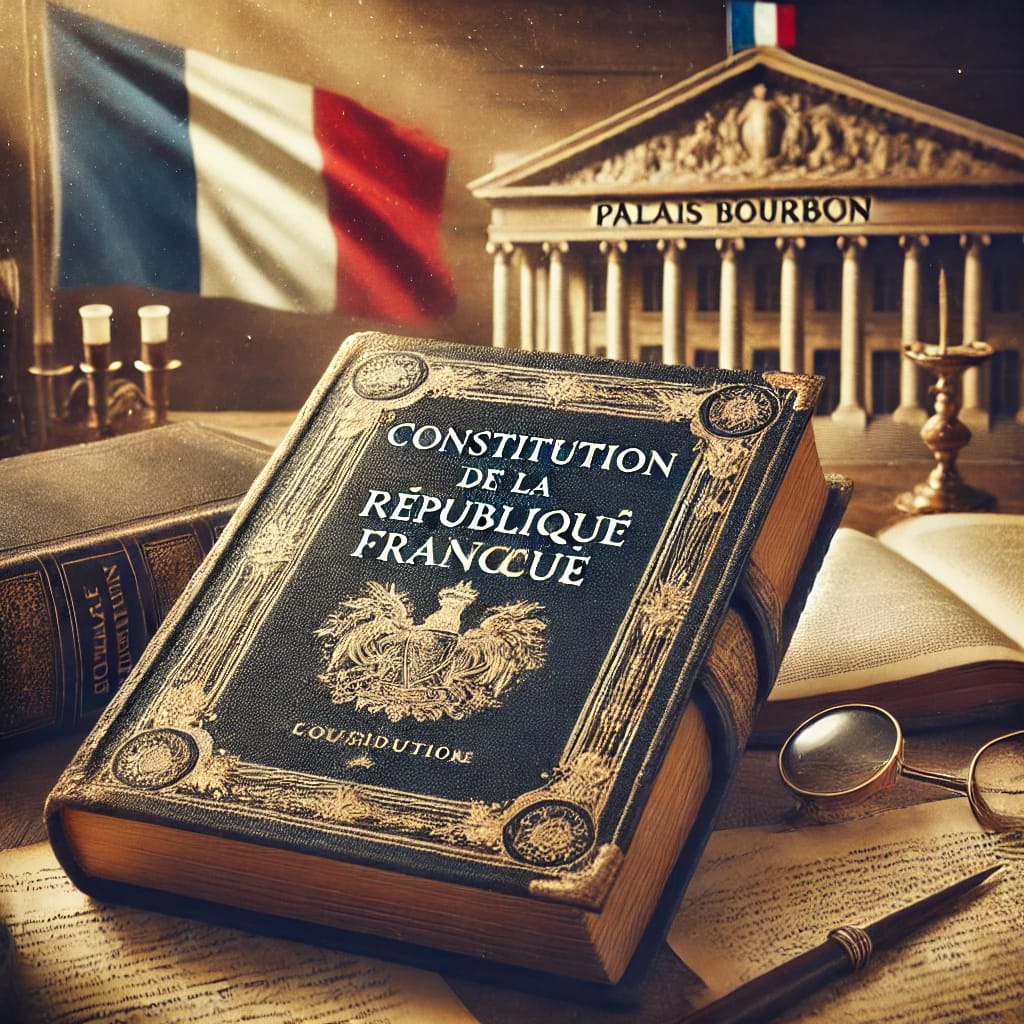Detailed Notes for UPSC Aspirants
UPSC Syllabus Alignment
- GS Paper II Topics Covered: Comparative analysis of the Indian constitutional scheme with that of other countries, structure and functioning of the Executive and Legislature, features of a semi-presidential system.
- Focus Areas: Unitary framework, semi-presidential system, executive dominance, constitutional experimentation.
- Exam Requirement: Understanding the hybrid system of France and how it differs from India’s parliamentary system.

1. Form of Government
Unitary Structure with Centralized Power
- France operates under a unitary system where regional authorities have limited autonomy and are subordinate to the central government.
- Unlike India’s quasi-federal structure (Article 1, 7th Schedule), France’s governance remains centrally driven.
- UPSC Relevance: Candidates should contrast India’s cooperative federalism with France’s rigidly centralized control.
Political Experimentation: A Historical Perspective
- France has witnessed multiple regime changes, transitioning between monarchies, republics, and hybrid systems.
- The Fifth Republic (1958), designed by Charles de Gaulle, brought a semi-presidential system to ensure executive stability.
- UPSC Application: Compare France’s evolving frameworks with India’s stable constitutional design post-1950.
PYQ (2019): “The concept of federalism in India is different from that in the USA.” Discuss with examples.
- France’s unitary model can be an additional point of comparison when contrasting with India and the USA.
2. Constitution Drafting Process
- Unlike India’s Constituent Assembly, France’s 1958 Constitution was drafted by a cabinet committee and ratified by a public referendum.
- India’s representative adoption of the Constitution (1949) contrasts with France’s direct democracy approach.
- UPSC Exam Relevance: Candidates should highlight how direct ratification affects legitimacy and governance.
PYQ (2020): “The Indian Parliament is not a sovereign body in the sense in which the British Parliament is.” Discuss.
- While this focuses on sovereignty, a reference to France’s executive-driven constitution-making can add depth.
3. Executive Structure
The President: The Most Powerful Figure
- France’s President, directly elected, serves as both Head of State and Government, unlike India’s ceremonial President (Article 52).
- Under Articles 5 and 16 of the French Constitution, the President holds emergency powers.
- UPSC Analysis: Compare India’s nominal President with France’s executive-centric President.
Prime Minister and Cabinet: A Balancing Act
- The President appoints the PM and Cabinet (Article 8), but the PM must have legislative support.
- During periods of cohabitation, the President is forced to appoint a PM from the opposition, shifting power towards Parliament.
- UPSC Comparison: India’s PM (Article 75) must be an MP, while France’s PM is not constitutionally required to be a legislator.
PYQ (2016): “Discuss the powers and functions of the President of India and compare them with the President of the USA.”
- France’s President can be included for a broader comparative analysis.

4. Executive vs. Legislature: Who Holds More Power?
- The French Executive dominates, with tools like Article 49(3) allowing the government to pass laws without parliamentary approval.
- India’s system ensures executive accountability to Parliament (Articles 74-75), reinforcing democratic checks.
- UPSC Insight: Candidates should emphasize how France’s executive dominance differs from India’s legislative supremacy.
PYQ (2017): “The principle of checks and balances is a salient feature of the American Constitution.” Compare with the Indian system.
- Reference France’s executive-centric model to highlight differences in global constitutional designs.
5. UPSC Exam Strategy for Answer Writing
Structured Approach:
- Introduction: Define the semi-presidential system.
- Comparison: Highlight key differences (e.g., unitary vs. quasi-federal, executive power distribution).
- Analysis: Discuss advantages (e.g., stability in France) vs. challenges (e.g., weak legislative oversight).
- Conclusion: Relate insights to modern democratic governance.
Key Concepts to Use:
- Unitary Government
- Semi-Presidential System
- Executive Dominance
- Constitutional Experimentation
Current Affairs Linkages:
- France’s political dynamics under President Macron.
- India-France bilateral relations (e.g., Rafale Deal, defense cooperation).
6. Summary Table for Quick Revision
| Aspect | France | India | PYQ Focus |
|---|---|---|---|
| Form of Government | Unitary, Semi-Presidential | Quasi-Federal, Parliamentary | Federalism (2019) |
| Constitution Drafting | Cabinet + Referendum | Constituent Assembly | – |
| Executive | Powerful President | Ceremonial President + Parliamentary PM | President’s Powers (2016) |
| Executive vs. Legislature | Executive Stronger | Legislature Stronger (Parliament) | Checks and Balances (2017) |
7. Additional Insights for Aspirants
The Fifth Republic: A Turning Point
- Established in 1958 to address political instability under the Fourth Republic.
- Designed to strengthen the President’s role and ensure governance continuity.
Cohabitation: A Unique Feature
- When the President and parliamentary majority differ, power shifts towards the PM and legislature.
- This contrasts sharply with India, where the PM always comes from the majority party.
Exam Tip:
- Understand France’s system as a hybrid model, borrowing elements from the USA’s presidential and UK’s parliamentary frameworks.
8. UPSC Practice Question
Question: “How does France’s semi-presidential system differ from India’s parliamentary system? Discuss with reference to executive and legislative relations.”
Approach:
- Compare unitary vs. federal systems.
- Examine executive authority and legislative dependence.
- Highlight real-world examples from India and France.




